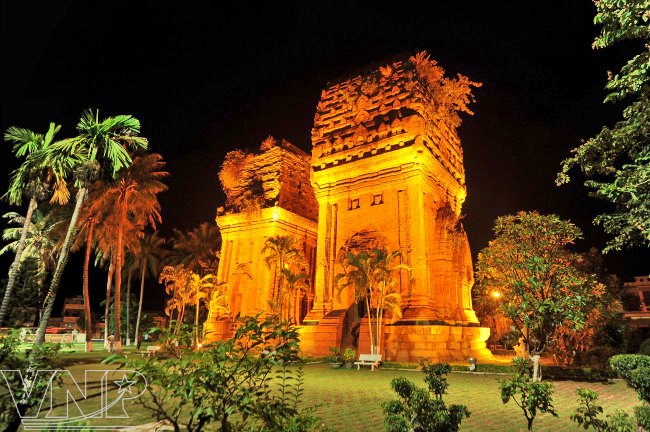In Hinduism, a Cham tower is a typical architectural style of the Ba La Mon religion with a peak, which is the symbol of the legendary Meru Mountain where genies live. During their period of ruling the country, the ancient Champa dynasties ordered many temples and shrines built, especially the Cham towers in Binh Dinh that were built from the 11th century to 15th century. It is an architectural style imbued with cultural features of the Champa people and influenced by Hindu architectural art.
According to domestic and foreign researchers, in terms of architecture, the Cham towers in Binh Dinh are the largest in Southeast Asia, mainly centered in Quy Nhon City and three districts of Tuy Phuoc, An Nhon and Tay Son in the area of Do Ban Citadel, the last kingdom of the ancient Champa Kingdom.
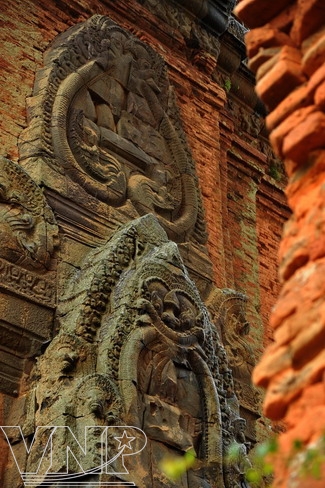 A stone relief on Duong Long Tower. Photo: Quang Minh |
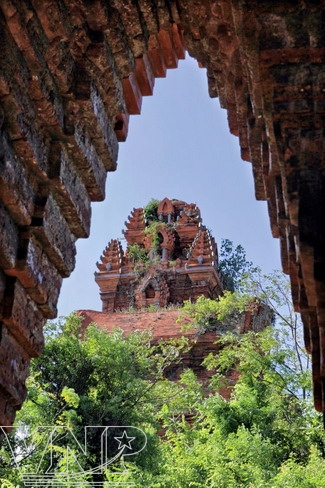 A part of the Banh It Tower Complex. Photo: Le Minh |
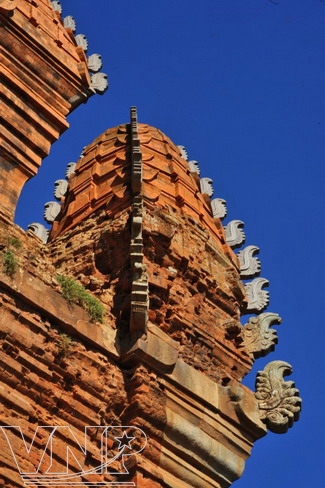 Stone fairy wings on the top of the Canh Tien Tower. Photo: Quang Minh |
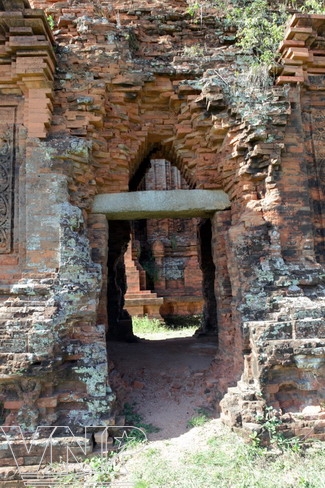 An imprint of time on the Banh It Towers in Tuy Phuoc District. Photo: Le Minh |
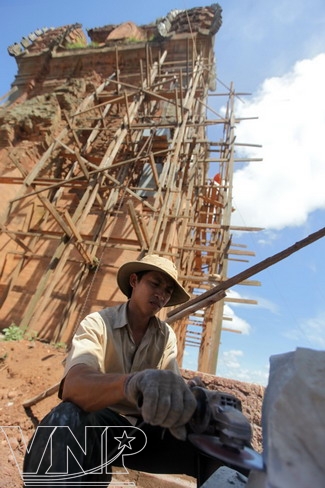 Workers are repairing some parts of Canh Tien Tower. Photo: Le Minh |
 A part of Duong Long Tower. Photo: Le Minh |
| «… For over thousands of years, the Cham towers in Binh Dinh have existed sustainably and contain many cultural and artistic values. For this reason, the local authorities have a plan to build up a file to submit to UNESCO to recognize the Cham Towers in Binh Dinh as a world’s cultural heritage site. |
In Dai Loc Village, Phuoc Hiep Commune, Tuy Phuoc District, 10km from Quy Nhon to the north, there is a complex of Banh It towers, also known as Bac, that were built during the 11th-12th centuries. The complex consists of four towers, about 2m high, located on a high hill in the peaceful countryside, full of sunlight and wind all year round.
In the east about 15km away, is Binh Lam Tower in Long Mai Hamlet, Phuoc Hoa Commune, Tuy Phuoc District. The tower is 20m high and divided into three floors. It is one of the towers first built in Binh Dinh, at the end of the 10th century and in the early 11th century.
In An Nhon District, there is Canh Tien Tower, also called Dong Tower, located on a mound in Nam An Village, Nhon Hau Commune. The Tower was built in the 12th century with delicate and sophisticated patterns.
The most imposing and grandiose is the area of Duong Long Towers or Nga Towers, built in the 12th – 13th centuries on the land of two villages: Van Tuong in Binh Hoa Commune and An Chanh in Tay Binh Commune, Tay Son District. The complex of these towers looks beautiful and magnificent among the remaining Cham towers in the Central region. The middle tower is 40m high while the two others are 38m. The bodies of the towers were built with bricks and the corners were grafted from large stone blocks which were skillfully carved. The upper half of the towers are large stone blocks heaped up together that were carved with Garuda bird genies, bats and eagles. The walls were decorated with leaves and images of singing and dancing performances.
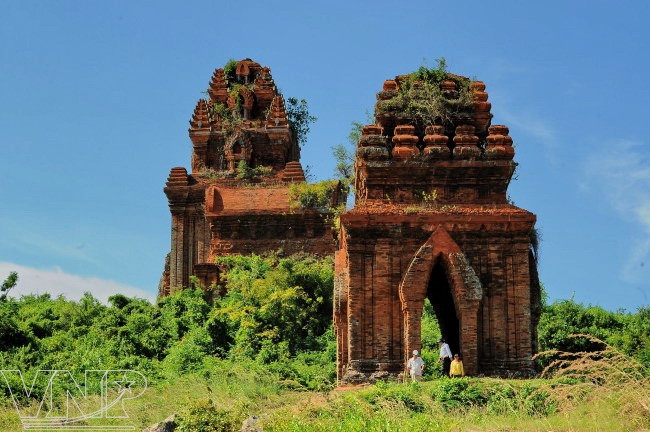 The Banh It Tower Complex dating back to the 11th century is located on a hill in Phuoc Hiep Commune, Tuy Phuoc District. Photo: Le Minh |
Many researchers supposed that most of the adhesive used to build the Cham towers in Binh Dinh is a complicated substance, including the main ingredient which is a resin of a variety of tree growing mainly in the Central region. The resin is very sticky, durable and water-resistant.
For over thousands of years, the Cham towers in Binh Dinh have existed sustainably and contain many cultural and artistic values. For this reason, the local authorities have a plan to build up a file to submit to UNESCO to recognize the Cham Towers in Binh Dinh as a world’s cultural heritage site.

